Picking Flowers c. 1912
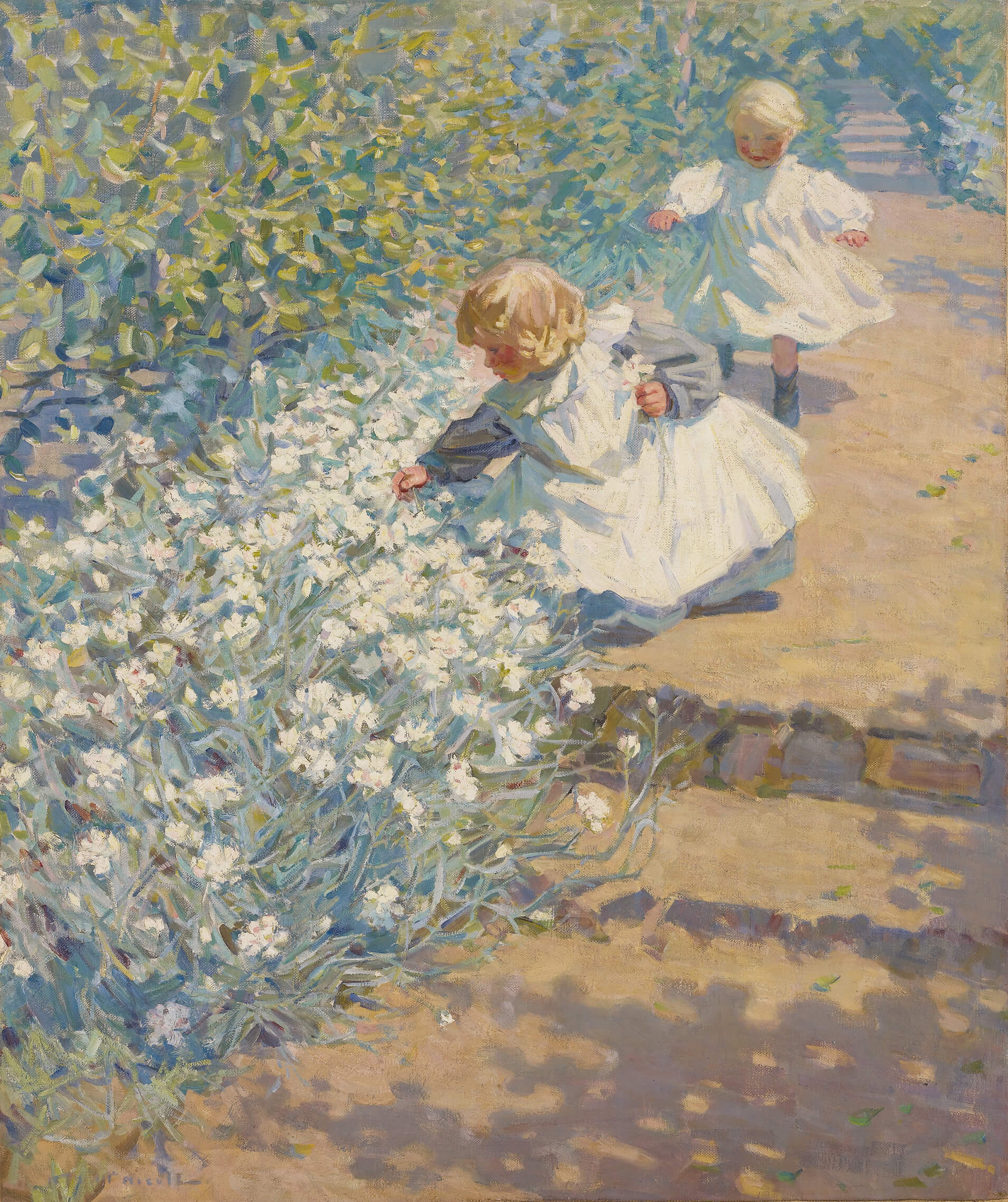
Helen McNicoll, Picking Flowers, c. 1912
Oil on canvas, 94 x 78.8 cm
Art Gallery of Ontario, Toronto
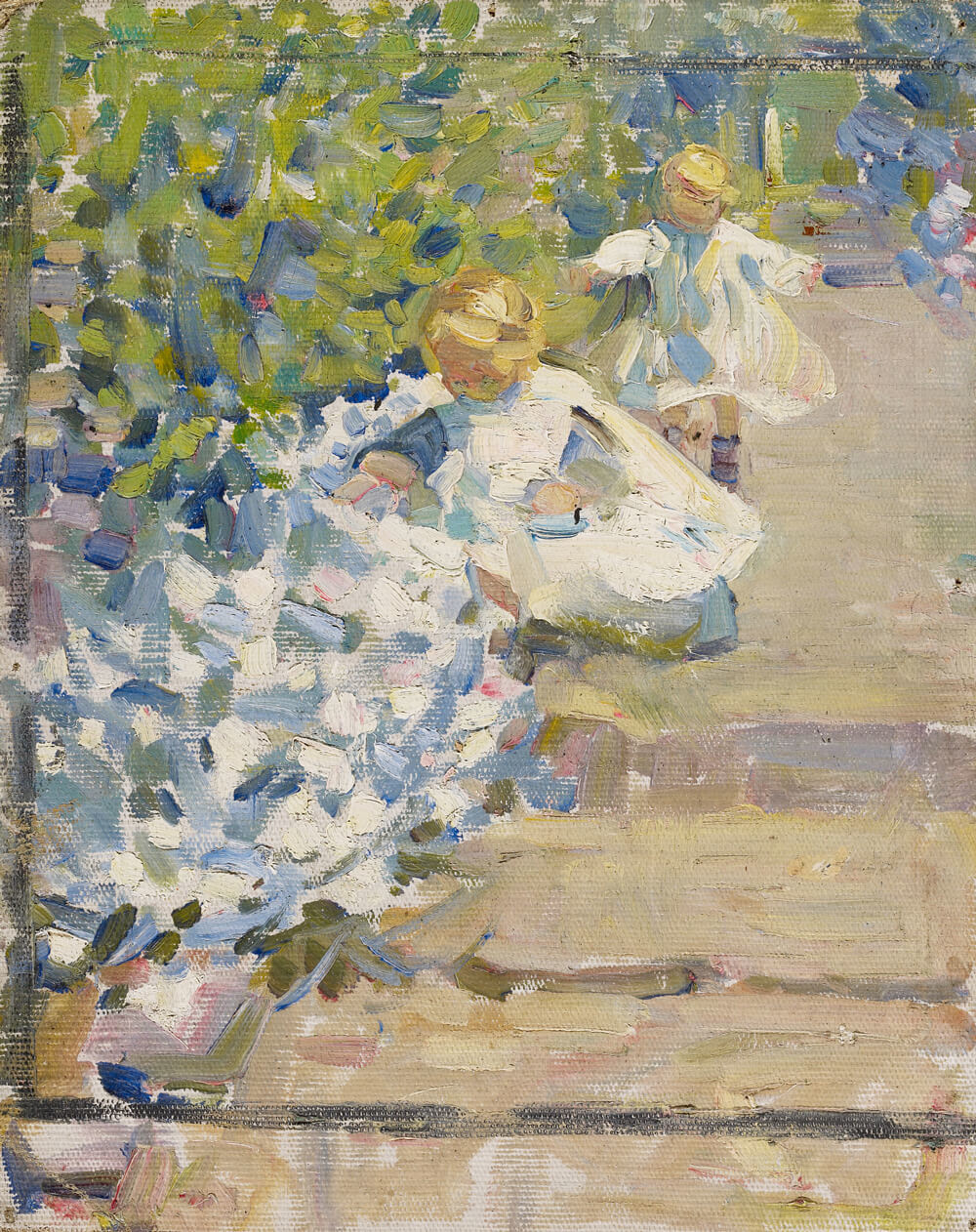
McNicoll portrayed the spontaneous and carefree world of children on many occasions, painting them in rural settings, in domestic spaces, and on the beach. Picking Flowers is a charming representation of young girlhood. The image depicts two children on a well-maintained garden path; the lead girl stops to pluck a flower from the blooming white bushes to her side. Her cheeks flushed against her sunlit blonde hair and bright white smock, she leans in for the perfect blossom to match the one already in her hand. As she focuses intently on her task, a younger child advances behind her, looking none too steady on her feet.
The painting is a particularly good example of McNicoll’s “detached” approach to her subjects, the children acknowledging neither one another nor the artist as they play. It also shows her evolving Impressionist style: the sharp diagonal composition and steep recession of the path flatten the space, as do the divided brushstrokes used to represent the tree leaves. McNicoll’s modernist visual strategies contribute to the sense that her young subjects are absorbed in a private world to which the adult viewer has been admitted for only a moment.
McNicoll was not the only artist interested in modern, white, middle-class children as artistic subjects in this period. Others included Berthe Morisot (1841–1895) and Laura Muntz Lyall (1860–1930). Beginning in the late eighteenth century, childhood was conceptually reimagined as a distinct phase of life, and children as pure and innocent creatures who should be sheltered from the concerns of the “real world.” Art historians such as Anne Higonnet have shown that visual culture played an important role in helping to reshape understandings of ideal childhood. McNicoll’s images of girls at work suggest, however, that this freedom to enjoy childhood was not available to all children equally.
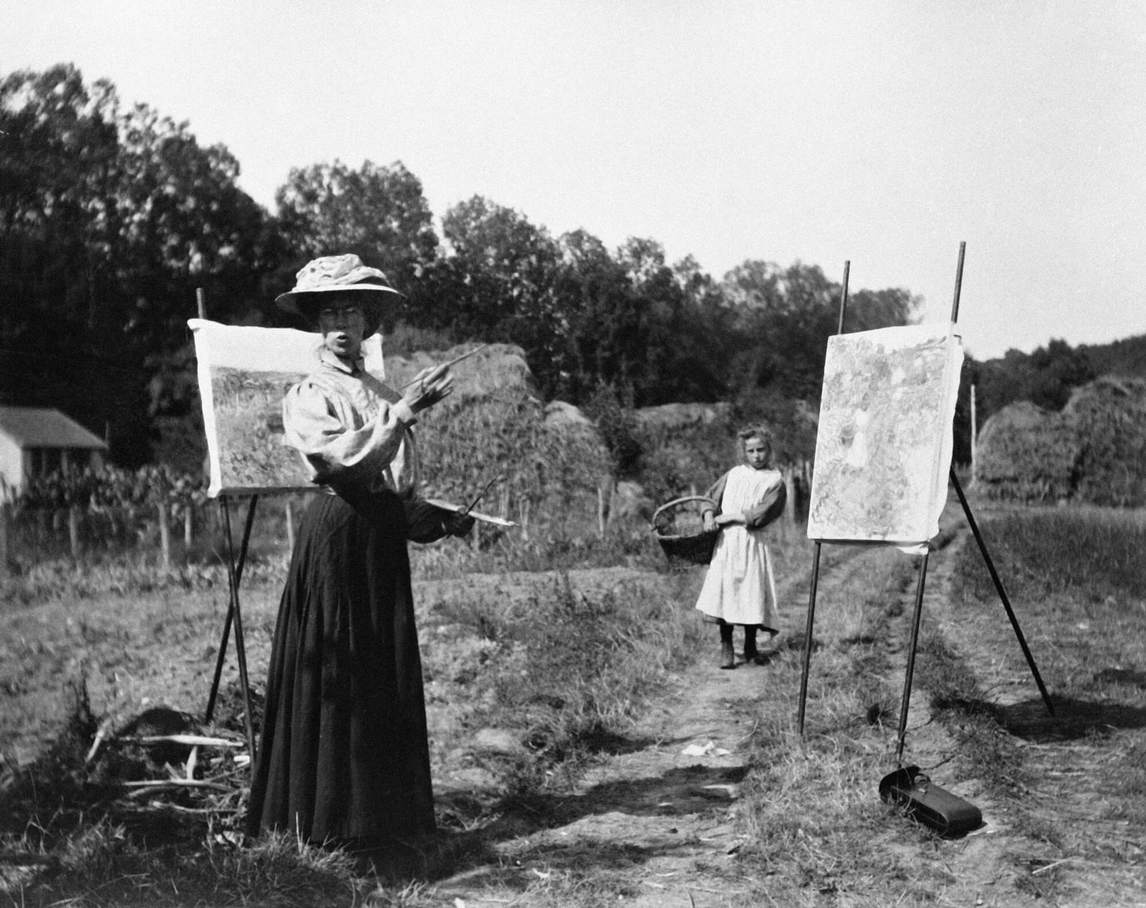
The theme of children picking flowers seems to have had special appeal for McNicoll: preparatory sketches exist for this painting, and a similar work, Gathering Flowers, c. 1911, repeats the subject closely, though with some differences. Moreover, McNicoll’s companion Dorothea Sharp (1874–1955) painted a version of the scene, Picking Daffodils, 1913. Photographs show the artists working together in the countryside: in one, Sharp stands at a canvas while a girl poses in the distance; a second canvas waits for McNicoll to return to her paintbrush.
McNicoll’s deafness may have presented an obstacle to finding and retaining good models. One letter from Yorkshire finds the artist complaining to her father that they have had no luck in finding models, even in neighbouring villages. Luckily, Sharp was well known to her colleagues for her ability to attract child models, “mostly the daughters of fishermen … who loved to dress up in the pretty frocks from the children’s wardrobe she always carried with her.”

 About the Author
About the Author
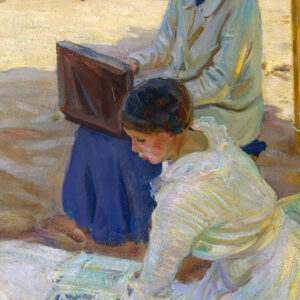 More Online Art Books
More Online Art Books
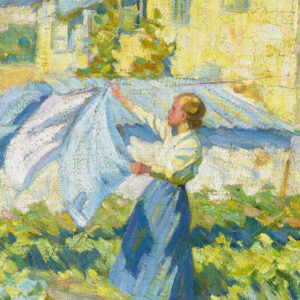 Acknowledgements
Acknowledgements